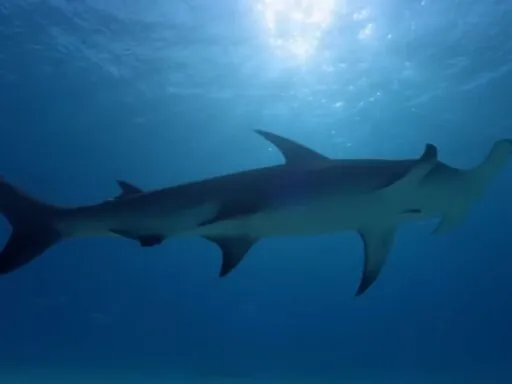What is the largest fish in the world? Imagine swimming next to a creature as big as a school bus! The oceans are home to some gigantic fish that can be longer than 40 feet and weigh as much as a small airplane. These big fish come in all shapes and sizes, each with unique features that make them special. From the gentle whale shark to the mysterious megamouth shark, every one of these fish has something amazing about it. Dive in to discover the top 10 largest fish in the world and what makes each of them so incredible!
1. Whale Shark
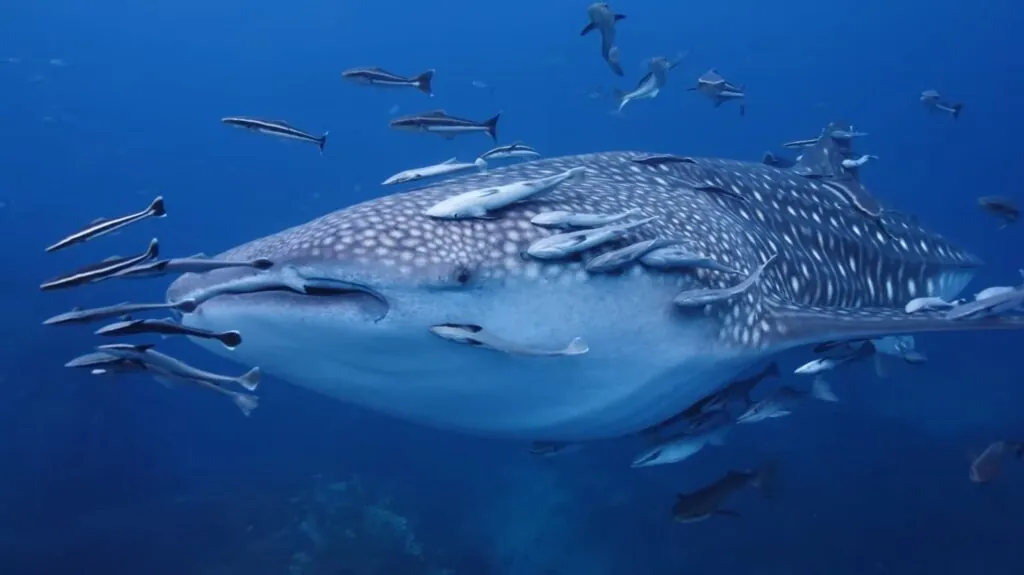
The whale shark is the largest fish in the world, reaching lengths up to 61 feet (18.8 meters) and weighing around 34 tons. This gentle giant has a distinct spotted pattern on its dark skin and is known for its unique feeding method: it is a filter feeder. Whale sharks swim with their enormous mouths open, filtering thousands of gallons of water per hour to consume plankton, small fish, and other tiny ocean organisms.
Interestingly, whale sharks aren’t fast swimmers, moving at about 3 miles per hour, which suits their peaceful nature—they pose no danger to humans. Found in warm tropical waters worldwide, they migrate vast distances each year. Whale sharks are also incredibly old—many live between 80 to 130 years! Unfortunately, they are classified as endangered, as they often get injured by boats and face risks from fishing practices.
2. Basking Shark
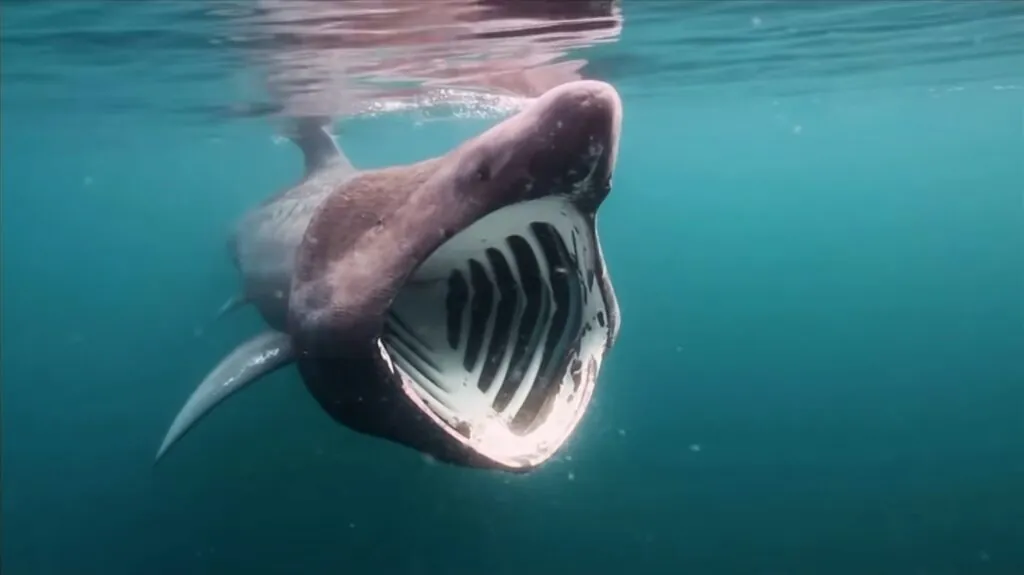
The basking shark is the second-largest fish in the world, known for its massive size and gentle nature. These filter-feeding giants can grow up to 40 feet long, with some weighing around 10,200 pounds, though the heaviest can reach nearly 45,000 pounds. Unlike most sharks, basking sharks don’t hunt large prey; instead, they feed on plankton by swimming with their mouths open to filter up to two million liters of water per hour.
Basking sharks are commonly seen near the ocean’s surface, especially in cooler waters during spring and summer, where they slowly move along coastlines, following plankton blooms. In winter, they dive deeper into colder waters. They can even be spotted in large groups, engaging in what scientists describe as “courtship circles,” where groups of both male and female sharks swim together in a slow-motion circle, which may be part of their unique mating behavior.
3. Great White Shark
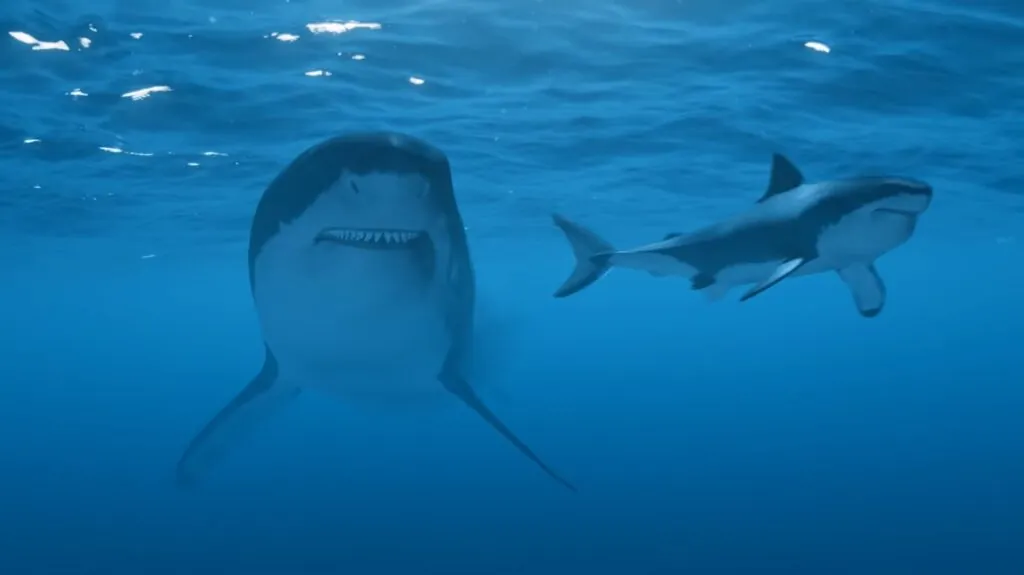
The Great White Shark is a fascinating and fearsome fish, reaching lengths of about 15 to 20 feet on average, with some individuals measuring up to 21 feet. This makes it one of the biggest predators in the ocean! Weighing up to 5,000 pounds, Great Whites, one of the most dangerous sharks to humans, are known for their incredible power and sharp teeth, which help them hunt marine mammals like seals and sea lions. These sharks are also very fast, reaching short bursts of up to 25 miles per hour.
With a long lifespan of up to 70 years, Great White Sharks grow slowly and take years to mature. Males are ready to mate by age 9 or 10, while females take even longer, maturing at around 14 to 16 years. Their reproduction is unique—they give birth to live young, and baby sharks, called pups, are already around 5 feet long at birth! They even have a protective way of keeping their eyes safe by rolling them back when they bite prey.
4. Tiger Shark
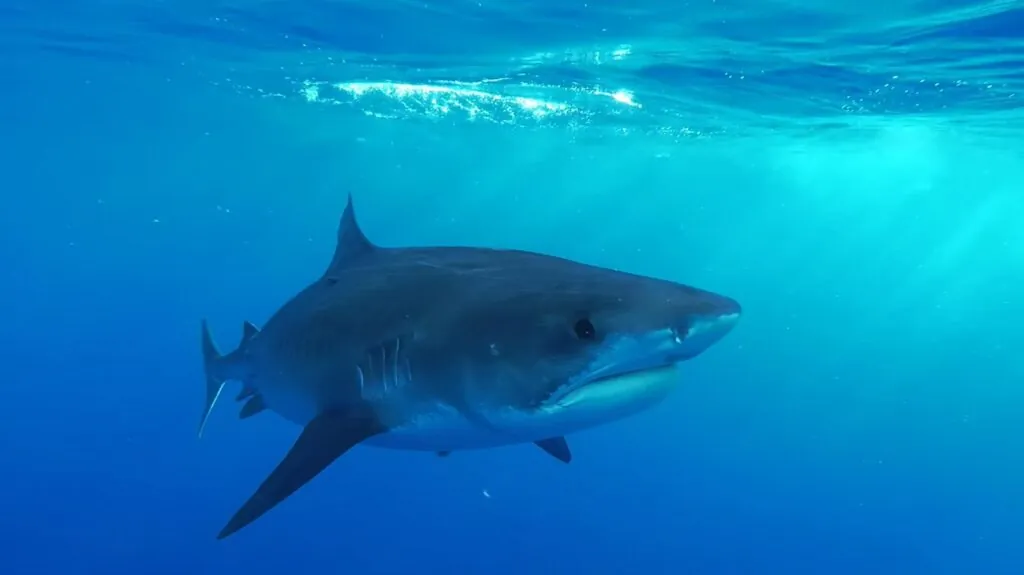
The tiger shark is one of the top 10 largest fish in the world and most impressive predators, reaching lengths of 10 to 13 feet and weighing between 380 to 1,400 pounds. Some of the biggest females can grow over 15 feet long and weigh up to 2,000 pounds! Known for the faint, tiger-like stripes on its body, this shark is as swift as it is big. It can swim up to 20 miles per hour, helping it catch a wide variety of prey, from fish and birds to even sea turtles. The largest tiger shark on record was a massive 1,785 pounds, caught in Australia.
5. Giant Oceanic Manta Ray
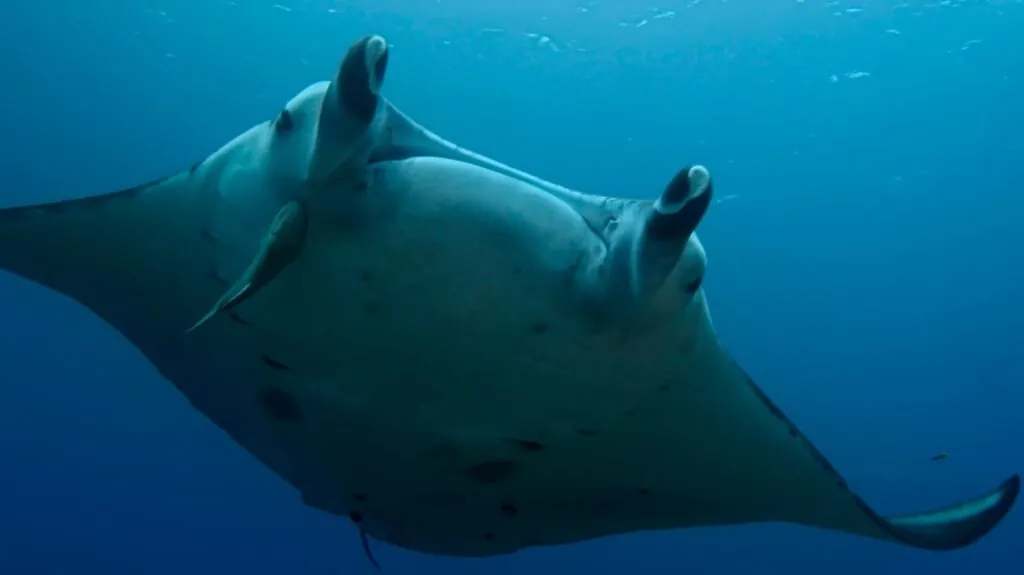
The giant oceanic manta ray is one of the largest and most fascinating fish in the world’s oceans. These rays can have an impressive wingspan that reaches up to 30 feet (9 meters) and may weigh over 6,600 pounds (about 3,000 kilograms). Known for their unique black-and-white coloring and graceful movements, manta rays are filter feeders, consuming mostly plankton and small fish as they glide through the water.
They are also known for their intelligence, with a high brain-to-body ratio, which is rare among fish. Their population is considered vulnerable due to slow reproduction rates and threats from fishing practices that target their gill rakers. Giant manta rays often travel alone or in small groups, and divers are lucky to see them leaping from the water—a behavior thought to help remove parasites or play a role in their social interactions.
6. Greenland Shark
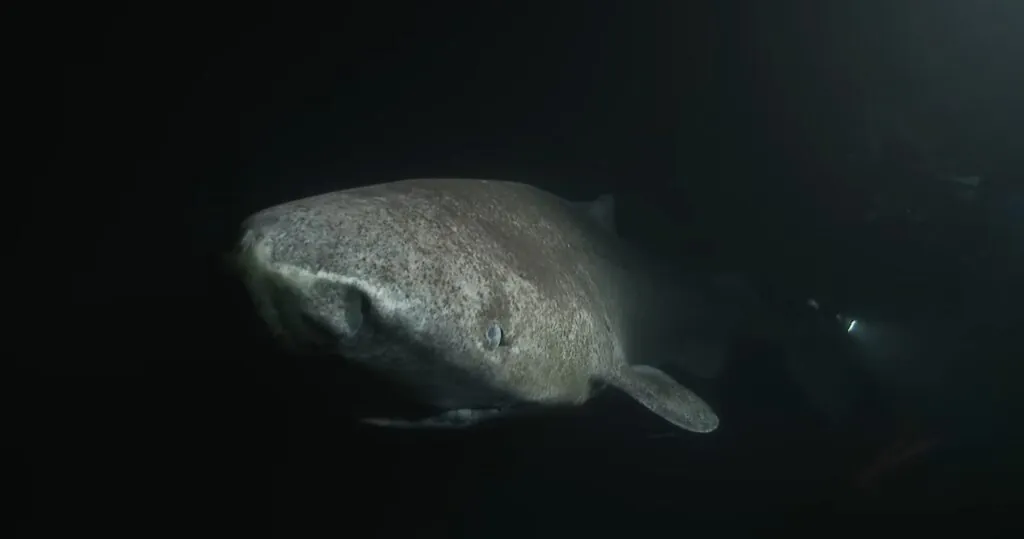
The Greenland Shark is another giant of the ocean, known for its remarkable size and even more incredible lifespan. These sharks can grow up to 24 feet long and weigh over 2,200 pounds, making them one of the largest carnivores in the sea. What really sets the Greenland shark apart, however, is its astonishing age – scientists believe some of these sharks live for over 400 years, making them the longest-living vertebrates on Earth.
Residing in the icy depths of the Arctic and North Atlantic, Greenland sharks are slow swimmers and scavengers, with diets that include fish, seals, and even polar bear remains, as they often feed on animals that have died and sunk to the ocean floor.
7. Great Hammerhead Shark
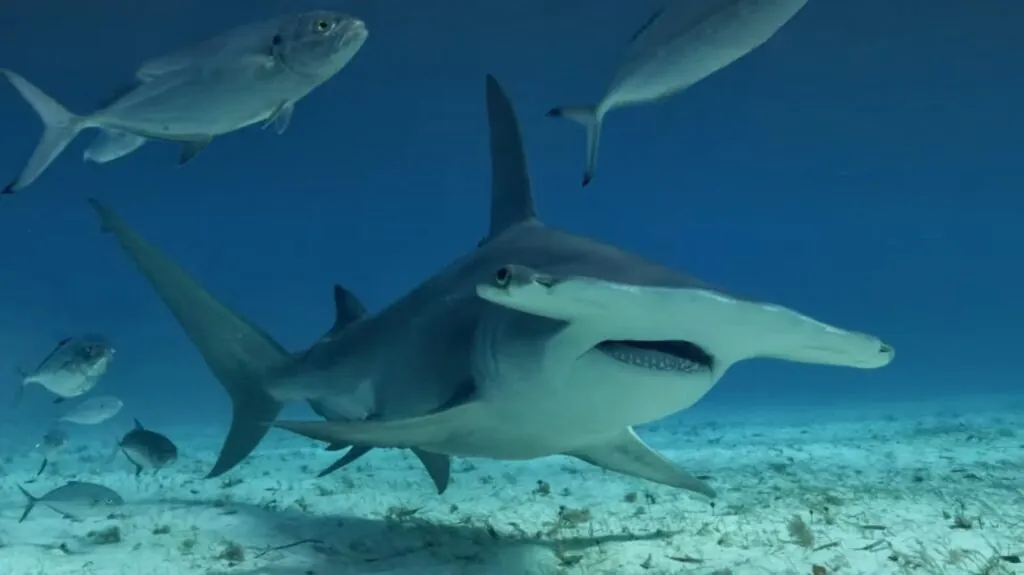
The Great Hammerhead Shark is an impressive predator with a unique look thanks to its hammer-shaped head, known as a “cephalofoil.” This shark can reach lengths of up to 20 feet, though most are closer to 13 feet, and weigh around 500 pounds. Found in warm, tropical waters across the globe, from the Atlantic Ocean to the Indian and Pacific Oceans, it prefers habitats like coral reefs and coastal areas.
The Great Hammerhead, one of the top 10 largest fish in the world, is known for its excellent hunting skills, often feasting on stingrays, squids, and smaller sharks. Its wide-set eyes help it have a greater view of the ocean floor, making it an efficient hunter.
8. Bluntnose Sixgill Shark
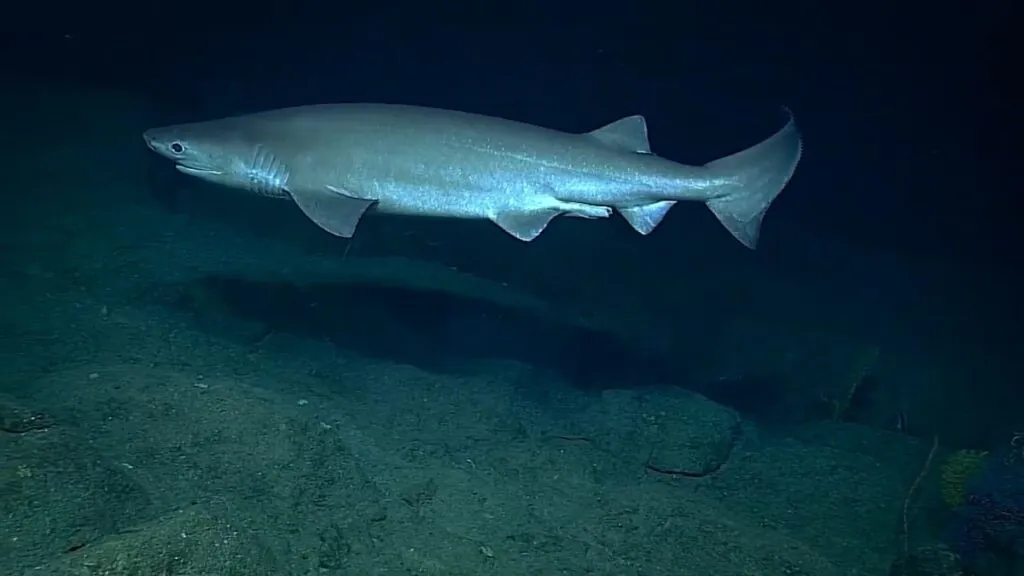
The Bluntnose Sixgill Shark is a fascinating and large shark found in deep oceans around the world. This shark can grow up to 16 feet long, making it one of the biggest fish in the ocean. It’s also heavy, weighing over 1,000 pounds! One cool fact about the Bluntnose Sixgill Shark is that it has six gill slits, unlike most sharks, which have only five. This ancient shark often lives in the deep, dark parts of the ocean, sometimes as far down as 8,200 feet! Its unique look and enormous size make it a fascinating creature to learn about.
9. Megamouth Shark
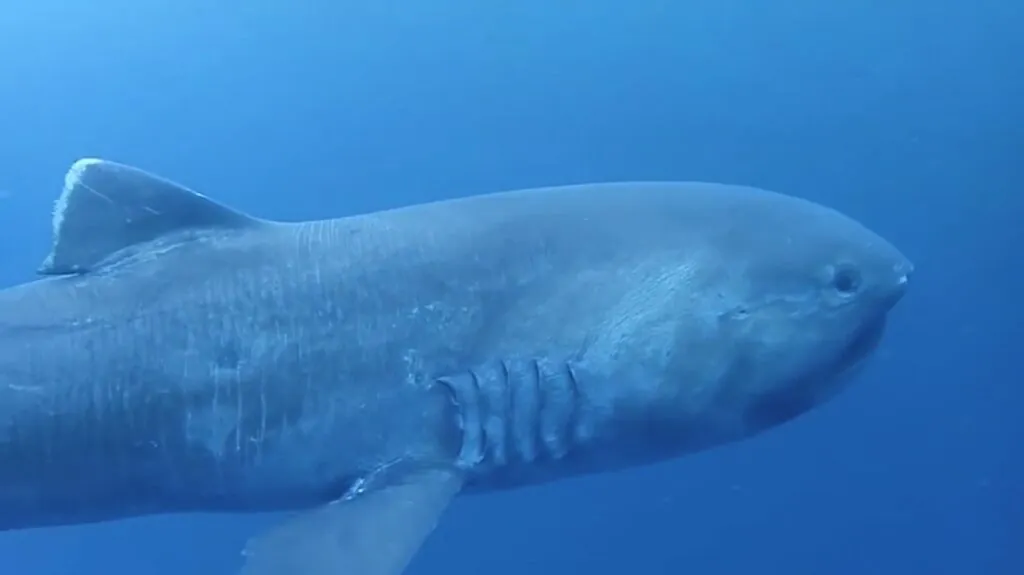
The Megamouth Shark, named for its gigantic mouth, is one of the rarest sharks in the world. It can reach about 16 feet long and weigh around 2,700 pounds, making it a true deep-sea giant. This shark was only discovered in 1976 when it got accidentally tangled in equipment near Hawaii. Since then, fewer than 100 have been spotted worldwide, mostly in the Pacific and Indian Oceans, but sightings remain extremely rare.
The Megamouth, one of the biggest fish in the world, has a unique feeding style, using its enormous mouth to filter-feed on plankton and small sea creatures. Scientists think the inside of its mouth might even glow, helping it attract food in the dark ocean depths. Though massive, the Megamouth isn’t a fast swimmer due to its soft body and flabby muscles, which makes it even more unusual compared to other sharks.
10. Sawfish

The Sawfish, also known as the largetooth sawfish or freshwater sawfish, is a fascinating giant of the sea that can grow over 21 feet long and weigh up to 1,300 pounds. This unique fish has a long, flat snout lined with sharp, tooth-like scales that look like a saw blade. Sawfish use this “saw” to catch their prey by sensing nearby fish and other animals and then slashing back and forth to stun or trap them.
Sawfish are found in warm, shallow waters around the world, including rivers and coastal areas. While they’re related to rays, they have a shark-like appearance and are known for moving between freshwater and saltwater, which helps them thrive in various habitats. In spite of their size and adaptability, they are endangered, mostly due to habitat loss and accidental capture in fishing nets.
In ranking the top 10 largest fish in the world, the main criteria included their maximum size, typically measured in length and weight, as documented by scientists and oceanographers. This list focuses on fish species known for their extraordinary size, each with unique features and habitats, from shallow coastal waters to the deep sea.

